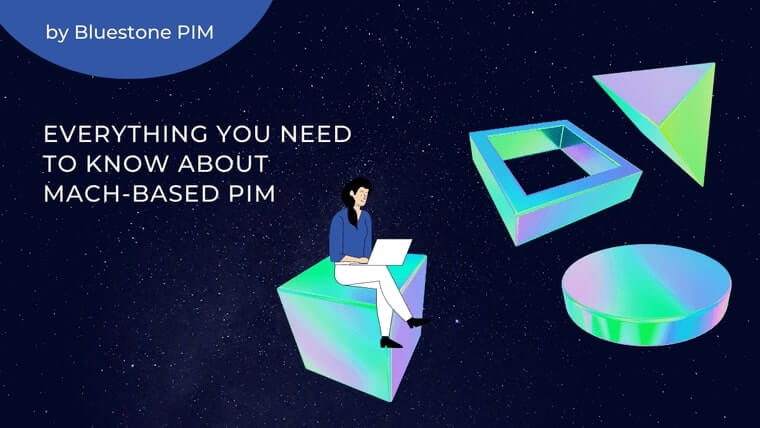Fact: all businesses rely on software which is indispensable if they are to stay afloat.
Ergo, the mundane side of their day-to-day is dealing with software upgrades, hardware asset management, the dreaded server downtime, or over-licensing costs (unused software costs reached $6.6BN in the US only).
So what if all these were a thing of the past, releasing your team or the entire company into what really matters – developing your business? After all, the one thing we can never get enough of is time, definitely not installing software patches.
The way to go if you want this freedom is to leave the ground (on-premise software), and go to the cloud, and above.
Go to the Cloud
The cloud has become a predominant mode of operation for B2B (and B2C) apps. The degree of cloud adoption has also matured significantly. What professionals were suspicious of at first, has now become another business-standard.
Cloud adoption so far
The statistics show that businesses now heavily rely on cloud solutions, although some cloud laggards still exist.
Among US companies the cloud adoption status breaks down as follows:
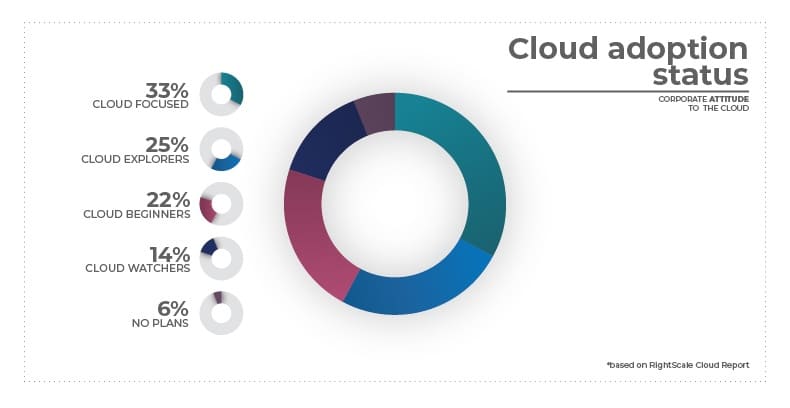
The need to collaborate, work from anywhere, and work securely are just a few factors behind the massive adoption of cloud technologies.
Currently, businesses handle a stunning 79% of the workload in the cloud, with 41% of the workload performed in the public cloud and 38% in a private cloud.
The remaining workload is run on-premises, and these two modes, on-premises and in the cloud, represent the two distinct ways of using business software.
How much do you want to manage
Further down the road, using the cloud can mean at least a few different models, depending on which aspects are controlled and managed by the software vendor and which by the customer.
There are three main models offered within the cloud: Infrastructure as a Service (IaaS), Platform as a Service (PaaS), and Software as a Service (SaaS). Different business needs can be successfully satisfied by a different segment of X-aaS.
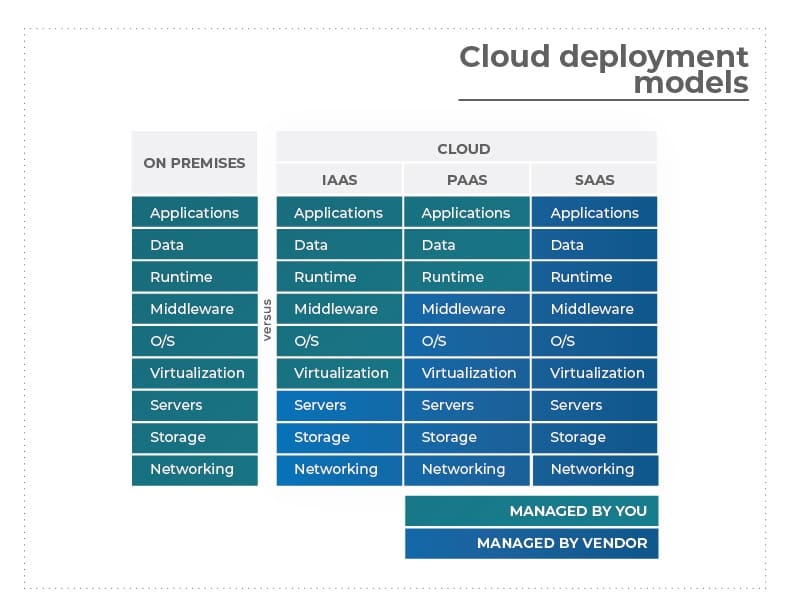
With on-premises solutions, a customer is responsible for the cost and management of the hardware, as well as the security, server rooms, support staff, and so on. The more we move to the right in the chart, the less there is to look after on the client’s side and the more ground is left for the vendor to cover.
SaaS solutions, therefore, are ideal for businesses that are in need of reliable software but are not willing to assign resources to software development, maintenance, upgrades, etc.
They would be interested in subscribing to a solution and being able to use it with their data added to the system. All this can be implemented in a relatively short time, as opposed to the typically lengthy and cumbersome implementation of an on-premises solution.
Benefit from the Cloud DNA
Another dimension by which we can differentiate software that uses cloud technologies is its development process.
Many business solutions that are still in use today were developed before such a pervasive use of cloud computing as occurs nowadays. They may have undergone changes to be compatible with the new cloud reality, but they also retain a large portion of their pre-cloud DNA.

DOWNLOAD FREE E-BOOK
Leverage product information to turn visitors into customers
Everything you need to know about PIM before you buy it.
Cloud-enabled vs cloud-native
Cloud-enabled software can utilize the potential of the cloud, its flexibility, accessibility, and mobility. Alternatively, cloud-native apps are apps that have been developed in the cloud environment from the get-go, and so have the ready potential to harness the cloud’s vast capabilities, fantastic scalability, and responsiveness.
Their advantages can be attributed to their specific architecture, which is based on microservices.
Only #cloud-native software takes full advantage of cloud computing's full potential, especially its scalability. Click To Tweet
What is revolutionary about microservices is that they allow upscaling one service (e.g. basket management) without the need for upscaling the other services to remain stable. Traditional (or monolithic) software would not allow this.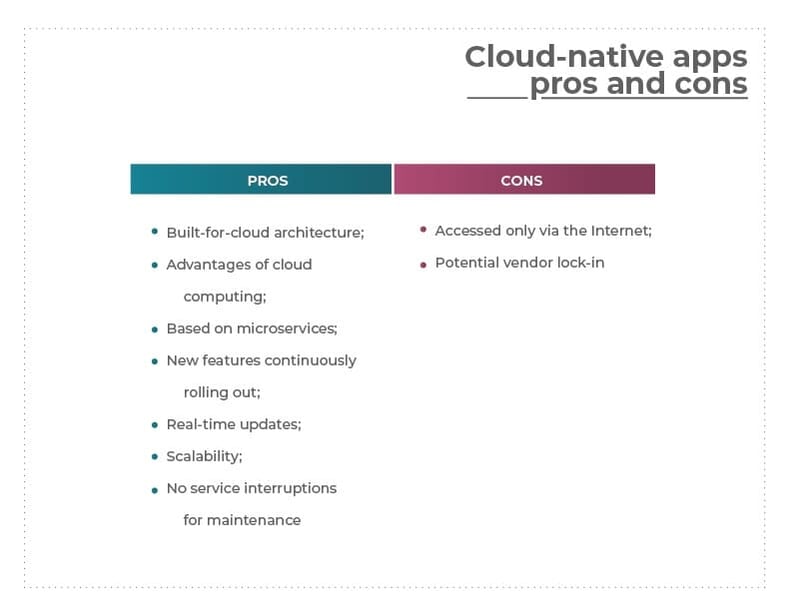
Key takeaways (with infographic)
- Cloud-enabled apps and cloud-native apps differ in architecture and potential.
- Implementing a SaaS Product Information Management solution, like Bluestone PIM, means that you can take full advantage of cloud computing.
- Apps based on microservices handle business needs, such as upscaling, much better than monolithic apps.
Here is an infographic that combines all of the data mentioned above into one:

Interested in product information management, but not sure where to start? Get in touch with our experts to learn how a PIM solution can boost your eCommerce strategy, and help your business to sell more, better, and faster. Or book a demo meeting to see Bluestone PIM in action.
You might also like
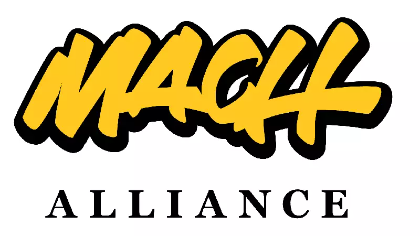
Bluestone PIM Joins the MACH Alliance
Get Started with MACH Architecture: Definition, Benefits,...
